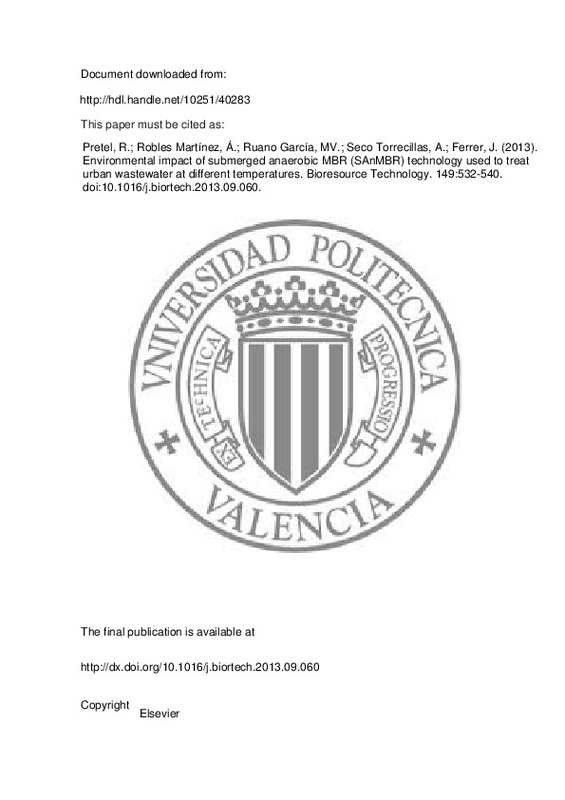JavaScript is disabled for your browser. Some features of this site may not work without it.
Buscar en RiuNet
Listar
Mi cuenta
Estadísticas
Ayuda RiuNet
Admin. UPV
Environmental impact of submerged anaerobic MBR (SAnMBR) technology used to treat urban wastewater at different temperatures
Mostrar el registro completo del ítem
Pretel, R.; Robles Martínez, Á.; Ruano García, MV.; Seco Torrecillas, A.; Ferrer, J. (2013). Environmental impact of submerged anaerobic MBR (SAnMBR) technology used to treat urban wastewater at different temperatures. Bioresource Technology. 149:532-540. https://doi.org/10.1016/j.biortech.2013.09.060
Por favor, use este identificador para citar o enlazar este ítem: http://hdl.handle.net/10251/40283
Ficheros en el ítem
Metadatos del ítem
| Título: | Environmental impact of submerged anaerobic MBR (SAnMBR) technology used to treat urban wastewater at different temperatures | |
| Autor: | Pretel, R. Robles Martínez, Ángel Ruano García, María Victoria Seco Torrecillas, Aurora | |
| Entidad UPV: |
|
|
| Fecha difusión: |
|
|
| Resumen: |
[EN] The objective of this study was to assess the environmental impact of a submerged anaerobic MBR (SAnMBR) system in the treatment of urban wastewater at different temperatures: ambient temperature (20 and 33 degrees ...[+]
|
|
| Palabras clave: |
|
|
| Derechos de uso: | Reserva de todos los derechos | |
| Fuente: |
|
|
| DOI: |
|
|
| Editorial: |
|
|
| Versión del editor: | http://dx.doi.org/10.1016/j.biortech.2013.09.060 | |
| Código del Proyecto: |
|
|
| Agradecimientos: |
This research work has been supported by the Spanish Ministry of Science and Innovation (MICINN, Project CTM2011-28595-CO2-01/02) jointly with the European Regional Development Fund (ERDF) which are gratefully acknowledged.[+]
|
|
| Tipo: |
|







![[Cerrado]](/themes/UPV/images/candado.png)


